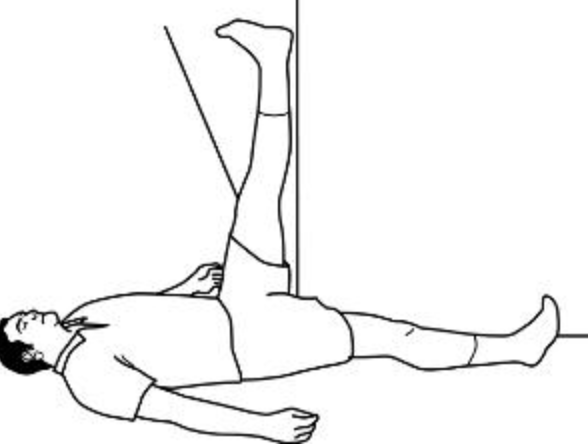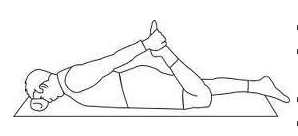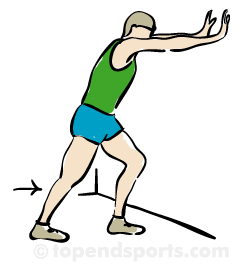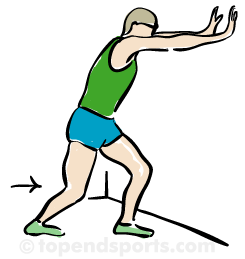Runners’ muscles get tight–it’s the nature of our sport and the life we have chosen! It’s easy to skip stretching; I admit, stretching can get tedious. However, stretching can be your secret weapon, your path to longer strides and more speed, and your shield against common running injuries.
Here we are going to present four good static (or long-hold) stretches. Static stretches are best done after a workout when your muscles are warm but they are fine to do in the evening when you have some free time–maybe you are foam rolling too. Most studies agree that static stretching is better done after workouts, and the dynamic stretching is done before races and competition. There are scientific arguments about why you should do your dynamic stretches before working out and static stretching afterwards, but let’s save that for another time!
I know, I know it is hard to find time to stretch. But I’d like to challenge all of you to try to find time to do these stretches at least 5 times per week! Log it. You can do it!
While stretching can seem tedious, you can make it more interesting! Be a leader, and when you are hanging out with your teammates after practice (the best time to stretch!), you can suggest you all hang out with a quad stretch while you talk. When you are on the phone at night, get in a hamstring stretch in the door. While you are waiting for dinner, do a calf stretch. Figure out a way to build stretching into your everyday life and you will have a leg up on the competition, and enjoy your running more.
If you have run for me before, you’ve heard me talk about one of the unique things about distance running:
The most important things in distance running happen when the coach is not around.
Stretching is one of these things that mostly happens when the coach is not around. You are the only one who knows whether you are consistently doing a good job of stretching or not. You do not earn an A or an F in stretching from the coach–you get your grade when you race, or when you get hurt or not. How well you stretch and how often you stretch is very important to your success, but you own the responsibility for stretching. What you do when the coach is not around will reveal to yourself how hard you are willing to work to improve and find out how fast you can become.
Hamstring Stretch ‘In the Door’
I think this is a fantastic stretch. Giving our hamstrings a good, regular stretch is a secret weapon that will help prevent injuries and also make you faster–really (flexibility in your hamstrings and hips can increase your stride length). There are other ways to stretch your hamstrings but this is my favorite. I learned this method from Chris Hallford and found this description on the Mayo Clinic web site.
If you are going to invest time in just one stretch, this is it (but the other 3 will pay off also).
After a workout, when you can’t find a doorway, this is a great partner stretch; find a partner and take turns helping each other stretch while you talk and chat and catch up with your day. You will find the active assistance of your partner acting as the door can really help get a good stretch.
Information is borrowed from the Mayo Clinic web site and some of the text is based on their advice also. The Mayo Clinic stretching information is here.
Your hamstring muscle runs along the back of your upper leg. To stretch your hamstring muscles:
- Lie on the floor near the outer corner of a wall or a door frame.
- Raise your left leg and rest your left heel against the wall. Keep your left knee slightly bent.
- Gently straighten your left leg until you feel a stretch along the back of your left thigh.
- Hold for at least 30 seconds, and up to 5 minutes. You can hang out and read a little bit too
- Switch legs and repeat.
- As your flexibility increases, maximize the stretch by gradually scooting yourself closer to the wall or door frame.
Quadriceps Stretch
Your quadriceps muscle (‘quad’) runs along the front of your thigh. To stretch your quadriceps muscles, there are two methods I like most.
Method 1–Prone quad stretch–preferred method to stretch the quads (it is easier to hang out and hold this stretch for a longer period of time):
- Lie on your stomach on the floor or ground
- Bend one knee so your foot lifts up toward your bottom. Grab your foot with your hand and pull it back toward your upper body, keeping your upper leg flush to the floor, until you feel a stretch in your quad muscles. You can also use a stretching rope or a towel to pull on your foot.
- Hold for at least 30 seconds.
- Switch legs and repeat.
Method 12–Standing quad stretch (this is not as effective as prone or on a table, but standing may be the most convenient way to stretch quads after a run):
- Stand near a wall, fence or a tree for support.
- Grasp your ankle and gently pull your heel up and back until you feel a stretch in the front of your thigh. Your knee should be pointed straight towards the ground.
- Tighten your stomach muscles to prevent your stomach from sagging outward, and keep your knees close together.
- Hold for at least 30 seconds.
- Switch legs and repeat.
Calf stretch (‘baby cow’)
You actually have two muscles that make up your calf, running down the back of your leg, your soleus and your gastroc. These are under-appreciated muscles but if you dedicate some time to stretching your calves, you can avoid some injuries (including help prevent shin splints). This stretch will also help your hill climbing technique and strength. A flexible calf will improve your dorsiflexion (this is our running-word-of-the-day 🙂 ): Dorsiflexion refers to the upward movement of the foot at the ankle joint, so that the toes are brought closer to the shin). More flexiblity in this area will allow your foot to be (more) completely and easily on the ground when you are climbing hills, instead of being on your toes as much. Not being on your toes rests your smaller calf muscles letting the larger muscles higher on your legs do the work, and that will help you a lot later in your race. To get both muscles in your calf, you should really stretch each calf twice, once with the knee straight to get the gastroc muscle and once with the knee bent to focus on the soleus muscle. Most people do only one stretch but you are not most people!
Straight back knee to stretch gastroc muscle.
Bent back knee to stretch soleus muscle.
- Stand at arm’s length from a fence or wall or a tree.
- Place your right foot behind your left foot.
- Slowly bend your left leg forward, keeping your right knee straight and your right heel on the floor.
- Hold your back straight and your hips forward. Don’t rotate your feet inward or outward. Check your feet to make sure they are lined up straight forwards–it is very common to have your feet duck out towards the outside of your body, and this makes the stretch much less effective.
- Hold for at least 30 seconds.
- Switch legs and repeat.
- To deepen the stretch, slightly bend your right knee as you bend your left leg forward and sit back deeper on your back leg.
- Kneel on your right knee, cushioning your kneecap with a folded towel or a sweatshirt.
- Place your left foot in front of you, bending your knee and placing your left hand on your left leg for stability.
- Place your right hand on your right hip to avoid bending at the waist. Keep your back straight and abdominal muscles tight.
- Lean forward, shifting more body weight onto your front leg. You’ll feel a stretch in your right thigh. If you perform this stretch regularly, you will find you can gradually be able to move your back knee further and further back.
- Hold for at least 30 seconds.
- Switch legs and repeat.




